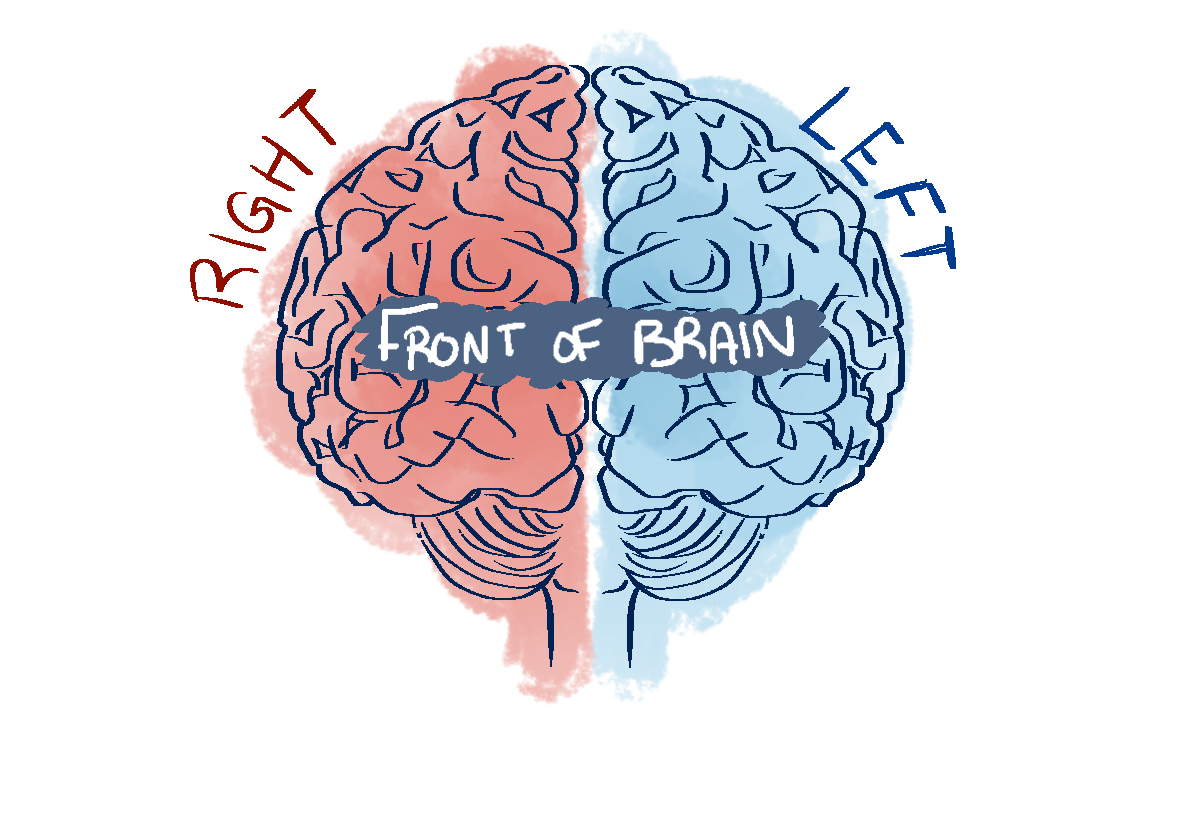There are two sides to every brain
The brain has two sides. A left hemisphere and a right hemisphere. They work together to deliver behaviour. We’ve not heard much about that so far.

We’re not going to hear much about it here, either. This design feature is not that important for learning.
Why are there two hemispheres? Long ago in evolution, it probably allowed the different sides of the brain to specialise in different sorts of behaviour: the left hand side on familiar motor sequences, like eating (or for humans, using tools, or speaking sentences); the right hand side on emotional responses, like fight or flight (or shouting out in surprise). The specialisation means the brain can use parallel processing: the right hemisphere is vigilant so that you don’t get eaten by a predator, while the left side goes about doing routine motor things.1
But the left and right side have very similar processing capacities, and mostly work together. Sure, the motor cortex on the left side operates the right side of the body, and the right side operates the left side. That’s a bit weird, a bit … twisted. And most people are right handed, but then that’s probably true in gorillas and chimpanzees, too, at least with respect to manipulating objects.
In humans, the processing properties of the two sides have subtle differences. The left focuses more on detail; the right more on themes, integrating across more information. That’s why when it comes to language, the left hemisphere focuses on individual word sounds and meanings, and putting together sentences, while the right hemisphere focuses on the general meaning of the communication and the melody (or ‘prosody’) of speaking that spans sentences. Adults with left hemisphere damage can lose the ability to understand words or produce sentences. Adults with right hemisphere damage can start talking in a monotone like robots and lose the ability to understand jokes.
The two sides of the brain do enough of similar things, however, that if you damage one hemisphere, the other side can take over most of the functions – at least while the brain is still flexible enough to undergo this sort of large-scale reorganisation, before the age of six approximately (other sorts of cortical reorganisation are seen at any age).
But don’t go thinking that people differ in how much they favour using their ‘left brain’ or their ‘right brain’ and that this produces different cognitive styles and personalities. That’s one of those brain myths.
And that’s about it for sides of the brain. Nothing more to see. Move along.
[1] See MacNeilage, Rogers & Vallortigara (2009). Scientific American.